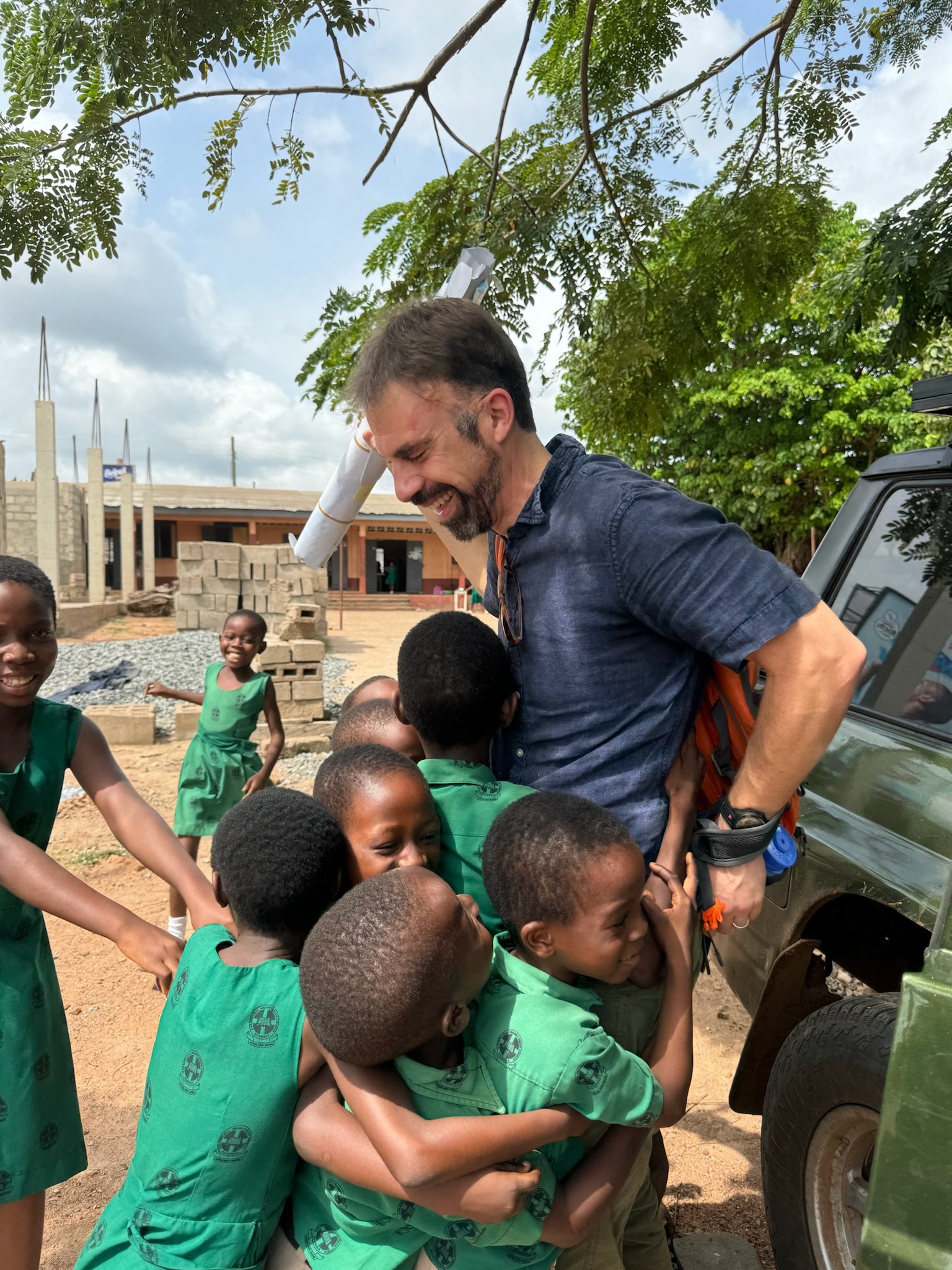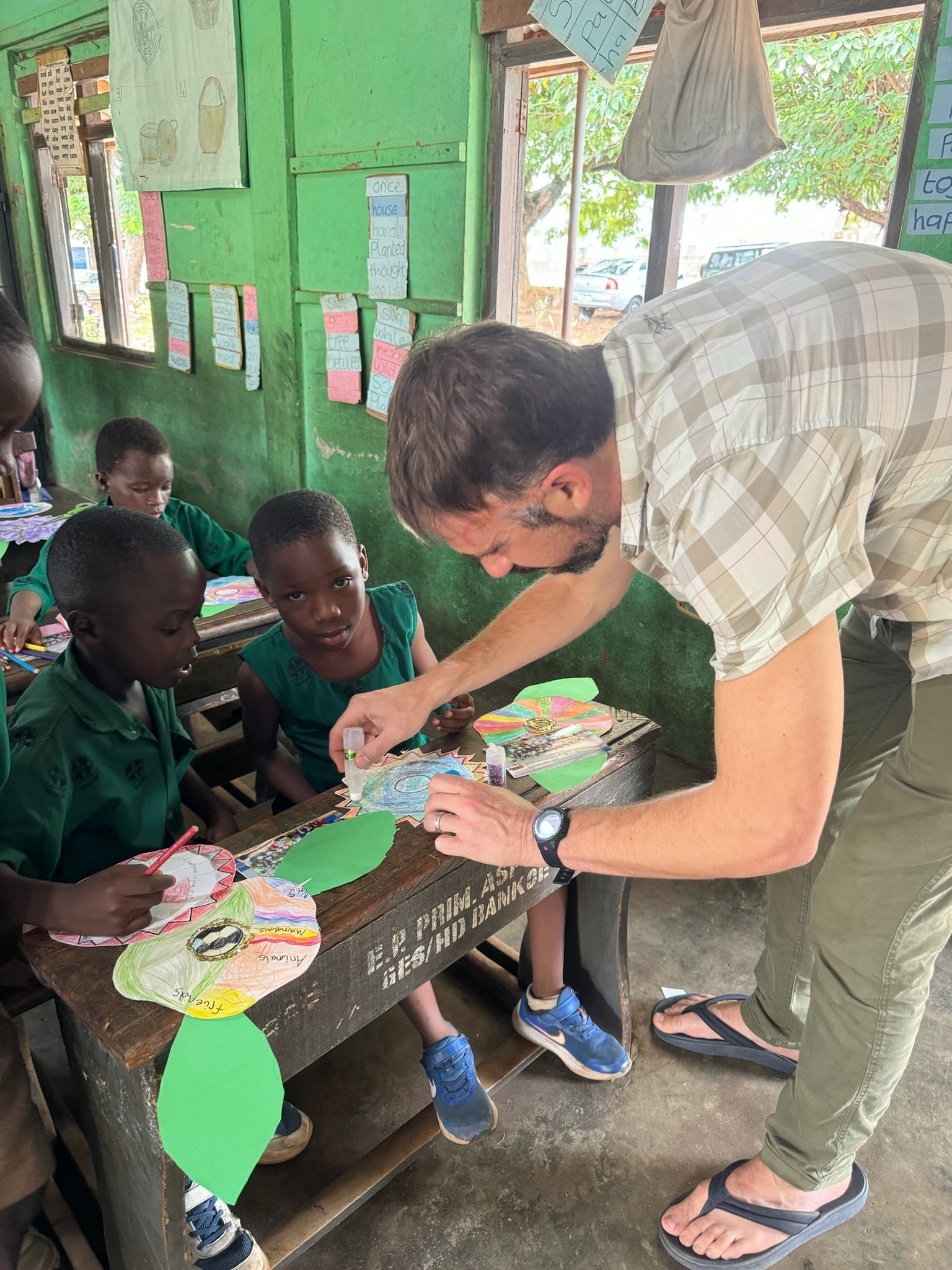Where Hope Walks With Us - A Reflection on My Time in Ghana
Traveling to Ghana with Children Inspiring Hope (CIH) stands as one of the most meaningful experiences I’ve had—both personally and professionally. This trip, as I shared with Amy while we were there, demanded much in every sense: physically, emotionally, and spiritually. It was not easy, but it was profoundly rewarding.
The trip itself was a challenge. While the travel wasn’t rugged, this was far from a luxury experience. As a volunteer, my purpose was to see, to listen, and to support in meaningful ways—primarily spending time with children while they completed their artwork for the exchange. It was physically demanding, with long days spent on our feet, and emotionally weighty, navigating the disparities and challenges faced by communities. Yet, these experiences strengthened my belief in the power of shared work and mutual support.
The people were extraordinary. Time and again, I found myself reflecting on what has increasingly become clear to me in my global education work: the true currency of this work is the people you get to walk alongside. It’s the connections you forge, the stories shared, and the mutual learning that transcends borders.
One of the most vivid memories I carry is from my arrival at EP Primary School-Ho Bankoe. As a tall, white foreigner, I stood out to the students immediately. They rushed up to me with bright smiles and laughter, eager to touch my skin, turn over the palms of my hands, pinch my elbows,
and even run their fingers through my hair. It was an intense, powerful moment—a warm embrace from these young students that I had never experienced before. Despite our differences, I was struck by their openness and joy. It was a moment of being deeply seen—not just as an outsider, but as someone welcomed into their world.
This openness and warmth reflect a deeply relational aspect of Ghanaian culture. I was struck by how high-touch and relationship-focused the culture is, particularly in how conversations and meetings are approached. While it wasn’t quite the same greeting culture I experienced in Senegal, there was still a clear emphasis on recognizing and acknowledging each person present. I noticed, too, the protocol for opening conversations—often with a formal welcome and, sometimes, the sharing of water. Kelvin explained how this ritual is evolving as younger generations bring their own approaches, yet the sense of respect and connection remains deeply rooted.
Another memory that left a lasting impression was walking with Amy to visit the Glovers’ home. The family lives in challenging conditions as squatters, with little more than a ramshackle shack, a small subsistence farm, and a few goats and chickens. As we walked from our hotel, the landscape shifted—large, newly built homes stood in stark contrast to the Glovers’ modest dwelling. Amy explained how the family is slowly being pushed off the land they have occupied for years. Standing there, I felt the weight of their precarious situation and was humbled by their resilience in the face of immense challenges.
My visit to the Glovers’ home was a singular moment that captured CIH’s mission in action. But it was one of many on the trip. One of the most powerful ideas Amy shared during our time together was a simple yet profound statement, part tagline, part model for their work: when you connect, you care, and when you care, you contribute. This idea resonates across all the work CIH does. The cultural exchange program that connects students here and in Ghana begins with art—simple but transformative. Watching Ghanaian children light up as they responded to prompts with creativity, a skill often underused in their traditional classrooms, was a moving reminder of the head, heart, and hands work that CIH inspires. I’ve seen this connection grow into care and then into action. The empathy curriculum CIH developed for middle and upper school students has brought issues like food insecurity and income inequality into focus for students here in the U.S., some of whom have taken the next step to raise funds for boreholes that bring potable water to rural Ghanaian communities. It’s this progression—from connection to contribution—that defines CIH’s impact.
Looking ahead, I’m excited to continue walking alongside CIH as an advisor, curriculum consultant, and partner. Amy and I spent time brainstorming ways to expand the service learning components and the exchange programs, and I’m eager to explore new sources of funding and support for their work. This isn’t just their mission—it’s ours. I feel a deep connection to this community and am inspired to continue building on the relationships and shared history we’ve started. As I said to Amy and Kelvin when I left, “There’s a lot of history ahead of us.”



